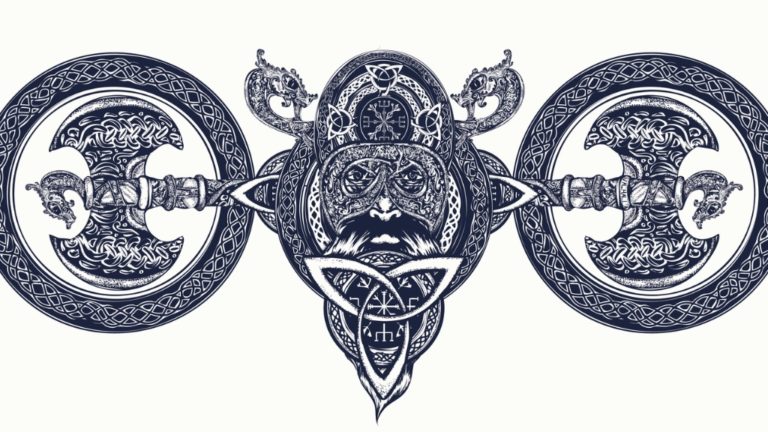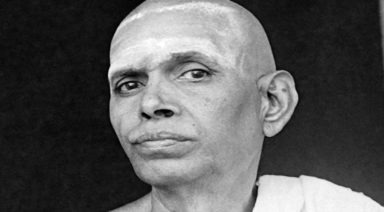The Norse Gods: Behold the Light

From the time I was young, I was fascinated with mythology. Any and all cultures caught my attention, but especially Norse mythology. The more I studied Norse mythology, the more amazed I was at its depth and profound philosophies. They had a rich and dynamic pantheon, one featuring gods and goddesses powerful and eager to live their lives to the fullest. Stories of the Aesir, the race of gods and the Jotun, or Frost Giants, filled my imagination. There’s a sense of reality to these tales, a cold wind that reflects the truth of the human condition.
What follows is by no means a complete list of the Norse gods, but these are some of the most fascinating to me.
Odin: The Wise
The ruler of the Aesir was Odin. Odin was unlike most kings of other pantheons. His thirst for knowledge and his willingness to sacrifice anything for that goal made him unique. He gave one of his eyes in return for wisdom. A one-eyed god is an interesting theme and is also used in the story of Thoth. Thoth sacrificed his eye for Horus and was rewarded with great gifts of knowledge and invented writing. Such was the case with Odin, and his search for the truth never ended.
My take on Odin is that his unquenchable thirst for knowledge was a symbol of the fact that at one time, oral tradition was the only way of passing along information from one generation to another.
Odin became despondent with the fact that there was no way to pass along history in a reliable manner. Mankind had to start over with every generation, keeping humans from moving forward, losing what generations before had accomplished. We are nothing more than an accumulation of our knowledge and everything that evolves in the present is dependent upon the lessons of the past, but to what avail if the past is lost.
His depression became anguish and Odin decided to sacrifice himself upon Yggdrasil, the tree of the cosmos. This remarkable myth culminates with Odin hanging himself upside down over the well of Urd, one of the Norns, they being knowers of the past, present, and future. He then caused himself to be pierced with a spear, and for nine days and nights, he hung in agony. By his order, no water was to be given and no food offered.
At the end of his long ordeal and with death approaching, he saw a gleaming within the water below him. He reached down, grasped the shining objects, and pulled them out with a mighty roar. These were the runes, the alphabet that would allow the sharing of history, thoughts, laws, and more importantly, the tales that made the Norsewhat they were. Being a god, he recovered, but his sacrifice is a model for mortals to never stop learning, or seeking the truth.
Odin rode an 8-legged horse named Sleipnir, an animal mount typical for a shaman, due to its having 8 legs. He wielded his famous spear, Gungnir, that never missed its mark. He was accompanied by two wolves, but also Hugin and Munin, ravens who were able to bring him any knowledge he needed from anyplace in the cosmos. The raven’s names mean thought and memory. Within these names resides one of the great truths of understanding metaphysics, a hint for all those with an unquenchable need to learn.
Odin often wandered amongst mortals to learn of their lot in life, bearded, wearing a broad brimmed hat pulled low over his eyes, and a wearing a cloak.
As any traveler could be a god in disguise, it was considered a good idea to treat everyone hospitably and to open one’s home to strangers. How interesting that the idea of kindness to strangers would be so ingrained in such a fiercely martial culture.
Thor: The Strong
Without a doubt, the most popular of the Norse gods is Thor. When I think of Thor, I don’t imagine a handsome fellow with long, blonde hair and a fetching smile. To me, Thor is always grouchy, easily angered, massive, with a bristling red beard and frizzy hair to match. He eats immense amounts of food and drinks anyone in the universe under the table. Thor can be easily fooled and in some myths, is the butt of a joke or two. As the god of thunder and lightning, Thor is unpredictable and brutally violent at times.
Thor wore a girdle which helped him maintain his immense strength. He also wore metal gloves that allowed him to wield his hammer, Mjollnir, without injury.
This hammer was a weapon of unbelievable devastation and when thrown, always returned to his hand. Interestingly enough, the hammer was also a sign of protection and a magical implement used in sacred rituals and rites. Thor traveled in a cart pulled by two goats. No ordinary creatures, they could be eaten daily. By placing their bones in their skins and holding Mjollnir over the bundle, they were revived and ready for another day’s journey.
There’s no doubt that the Norse enjoyed a good fight, at least philosophically, and Thor was the epitome of that mindset. He was a favorite god of the common people, as his demeanor was anything but elitist. Easily offended, lacking judgment at times and quick to retaliate, the God of Thunder was a dangerous but incredibly popular deity, as he is to this day. Thor’s hammer is still worn by many as an amulet, not only for protection but as a symbol of the mighty glory and the power of the old ways.
Uncompromising and intolerant of those who abuse others, Thor was a worthy patron. As an indulgent lover of food and drink, he was the very embodiment of celebrations. As a guardian of the cosmos, he was the power of justice to abusers of the weak. His continued popularity is a testament to Thor’s appeal as a deity for the common people, and I doubt he’ll ever lose his following.
Loki: The Magician
There are two kinds of people: those who can feel compassion for Loki and those who can’t. Loki is one of the most formidable tricksters and troublemakers in all world mythology. Half Aesir and half Jotun, Loki is a perennial outsider, yet still a part of the family. He’s the antagonist in many of the most interesting Norse myths. Without him, the stories of the Aesir would be bland, to say the least. Although he adds excitement and humor, there’s no doubt that he makes lots of trouble. I started reading Norse mythology at an early age and Loki reminded me of a friend of mine, as well as myself on some occasions. Mischief is something all youngsters understand.
It always seemed to me that Loki couldn’t help himself. He was brilliant and could outthink almost anyone around him. He hung out with Thor, who wasn’t always the brightest lamp in the hall and took advantage of that fact. One story features Thor’s hammer being stolen and Loki dressing Thor up in women’s clothing, in a plan to get the hammer back. It’s quite a tale.
Many myths represent Loki as being relatively civil and even helpful, but the main emphasis is on his troublemaking and even the disastrous effects that he brings into play that eventually lead to his eternal punishment.
Loki is self-centered and malicious. Yet, he can be a friend and powerful ally in a tough spot. He can taunt, intimidate, connive, cheat, boasts and create situations that bring about horrible consequences, and still is a comrade for several excursions with Thor and Odin. In fact, Odin’s miraculous, 8-legged horse’s mother was Loki. Yes, Loki had taken the form of a mare, well, it’s a long story.
Loki’s consort, Angrboda, was a Frost Giant and bore him 3 children, all of them worth mentioning. The best known of Loki’s offspring was Fenrir, the wolf destined to play a part in the death of Odin at the end of times, Ragnarok. Jormungandr, the second of Loki’s sons was an enormous, venomous serpent encircling the earth, or Midgard, by gripping its tail in his mouth. Releasing his tail would signal the onset of Ragnarok. Loki’s daughter Hel, was half alive and half corpse. Hel ruled Niflheim, the world of those who died a peaceful death and uneventful existence. Going to Hel meant dying and going to a boring afterlife.
A shape-shifter and magician, Loki exemplifies the dilemma of all magicians. Just because I can do it, should I? Magic is a journey many cannot navigate wisely.
For those of you who work with Tarot, think of The Fool in connection with Loki. Give it time.
Loki is credited with orchestrating the death of Balder the Beautiful. Eventually, Loki was hunted down and chained to a rock beneath the jaws of his son, the great serpent. The snake’s venom dripped on Loki, causing unbearable pain. Loki’s wife, Sigyn, held a bowl over Loki’s face, catching the venom, but every now and then she had to empty it, and the dripping poison reached Loki, causing screams of agony, thus shaking the foundations of the cosmos, causing earthquakes to tear the earth apart and volcanoes to erupt.
Although enigmatic and troublesome, there’s something likable about Loki. Perhaps it’s the fact that there’s a little Loki in most of us and he gives us a good example of why it’s desirable to keep that side under control, as much as possible.
Tyr: The Selfless
The story of Tyr and Fenrir is one of the most compelling myths I know. Tyr was a god of war, often associated with Mars, but his story is unlike anything attributed to that Roman war god.
It was foretold by the Norns that Fenrir, the son of Loki and a massive wolf, would swallow Odin at the end of time, Ragnarok. In an attempt to forestall this from happening, it was decided that Fenrir, also known as the Fenris Wolf, should be restrained, but how and by whom? Several chains were fashioned by the dwarves, the great magical metallurgists, to no avail. Eventually, a magical chain was made of six impossible substances that might conceivably hold the giant wolf. This thin chain was known as Gleipnir and was made from the sound of a cat’s footstep, a woman’s beard, the roots of a mountain, the nerves and calm demeanor of a bear, the breath of a fish, and the spittle of a bird.
Fenrir, wanting to ensure his freedom, demanded that he’d only submit to the chain if someone put their hand in his mouth, with the understanding that if he was actually constrained, the hand would be bitten off. Tyr immediately offered his hand, knowing that he’d lose it. His sacrifice was a tribute to a sense of duty and was hailed as the aspiration of all warriors and members of society at large. The good of the many over the needs of the individual was thus proclaimed as the epitome of bravery and selflessness.
Fenrir couldn’t break the chain and Tyr lost his hand. Undaunted, Tyr want on to fight in battles, one handed, and lost none of his prowess.
One of the names he was known by was, “Wolf Leavings.” Although there have been many theories put forth as to the meaning of this epithet, I find it quite lovely and simple. His hand, eaten by the wolf, would have been excreted eventually, the wolf’s leavings. Such a term is both humbling and laced with ironic humor. It’s indicative of the nature of all great sacrifices, and the sense of play that made the Norse gods amongst the most interesting of the world’s great pantheons.
Until next time, I wish you all peace and love.

About the author:
Of Egyptian heritage, Mo has been a student of the mysteries for over fifty years and has been a professional consultant for over thirty. His intensive studies have encompassed Tarot, Vedic Astrology, I-Ching, Hermetic Qabalism, Runes and numerous other spiritual systems. Mo’s lifelong quest into all things metaphysical has provided him with a powerful intuition and accurate tools with which he has guided thousands of clients worldwide. Mo specializes in providing clarity and helping the seeker in making solid decisions or forging new paths in life. He’s well known for his sound relationship counseling and has a reputation for providing gentle guidance without sugar coating the hard issues. A Master of his art, he believes in empowering his clients, not encouraging codependency.
How to Connect with Your Ancestors Spiritually Through Ceremony

The desire to communicate with our ancestors is an innate part of the human experience. We intuitively sense their presence in our wisdom bodies, and it begs the question: can we communicate with them?
You don’t need special skills to begin. Just an open mind, a clear intention, and a willingness to listen. Through daily prayer, meditation, creation of art, music, food, and ceremony, the ancestor spirits can communicate, guide, protect, and heal the living. Ancestral communication has been a spiritual practice in every wisdom tradition throughout time. Your ability to connect with your ancestors is always available.
This kind of spiritual connection supports emotional healing, clarity, and insight in everyday life. Simple ways to begin connecting with your ancestors include:
- Creating a home altar
- Offering prayers or intentions
- Practicing meditation or visualization
- Journaling or dreamwork
- Making food or art in their honor
In particular, the days on and around October 31 to November 2 are a transformational portal on the wheel of life. It’s the mid-point between fall and winter, the death and dying season. Therefore, it’s a powerful time to communicate with one’s deceased family members.During this window, the veil between worlds is said to be thinner. It’s an ideal time to begin your practice, even for the first time.
Read on and receive intuitive guidance on how to create a beautiful ceremonial journey to communicate with your ancestors.
The Traditions of Ancestral Communication
Ancestral communication is an ancient and daily practice found in many cultures around the world, including Mayan, Celtic, Aborigine, Native American, Ancient Greece, Ancient Eurasia, African Tribal, Tibetan, and the Vedic/Yogic traditions.
Across cultures, these traditions often include:
- Prayer or chanting
- Offerings of food, flowers, or incense
- Honoring the dead on specific holy days
- Storytelling and oral histories
- Building shrines or ancestor altars
Through ancestral communication, you’re able to open your heart, experiencing a deeper love within yourself, due to the connection you have with your family tree. Through this practice, people have been able to reconcile deep wounds and karmic patterns that stem back from past life trauma and even issues between the deceased and living families.
“Ancestral work can transform the karmas of past generations, as well as work into the current and future generations for healing.”
This is the foundation of ancestral healing: releasing inherited pain while reclaiming guidance, wisdom, and support.
Connecting Ancestors to Halloween and the Day of the Dead
Halloween and the Day of the Dead are sacred windows in time. They offer a unique opportunity to connect with your ancestors, honor the dead, and reflect on the impermanence of life. Whether you know these traditions as Halloween, Samhain, All Saints Day, or Día de los Muertos, this season marks a turning point in the spiritual year, a time when the veil between the living and the spirit world is considered thinnest.
These days are more than cultural holidays, they are spiritual invitations. They ask you to slow down, listen, and remember. This is when ancestor work becomes easier, more natural. The energy of remembrance is already in the air.
Halloween, or All Hallows’ Eve, literally means “Holy Night” or “All Saint’s Night.” Its roots trace back to ancient European traditions that honored the dead with light, prayer, and seasonal ritual. Over time, the focus shifted toward costumes and candy, but the essence remains: a recognition that something sacred is moving through the darkness.
Día de los Muertos, rooted in Indigenous Mexican tradition and blended with Catholic influence, continues to carry that essence fully. During this celebration, families build elaborate altars, cook traditional foods, decorate with marigolds, and welcome the spirits of their loved ones back for a brief visit. It’s a joyful, colorful, deeply communal ritual.
Throughout villages and cities, people gather to remember, not in silence, but in celebration. Candles burn late into the night. Music fills the streets. Portraits of the deceased are surrounded by flowers, bread, tequila, chocolate, and handwritten messages. It is a shared act of love, extended across time.
By contrast, modern Halloween often forgets this sacred thread. But the jack-o-lanterns, the candlelight, the masks, they all echo an older story. If you choose to, you can reclaim the spiritual intention. Light a candle. Speak a name aloud. Cook a meal they loved. You don’t need a crowd or a festival. Just your attention and sincerity.
A few quiet moments, held with purpose, can open the door. Even something as simple as sitting beside a lit candle and offering your thoughts or gratitude becomes a form of ancestral veneration. That’s all it takes to create a spiritual connection.







